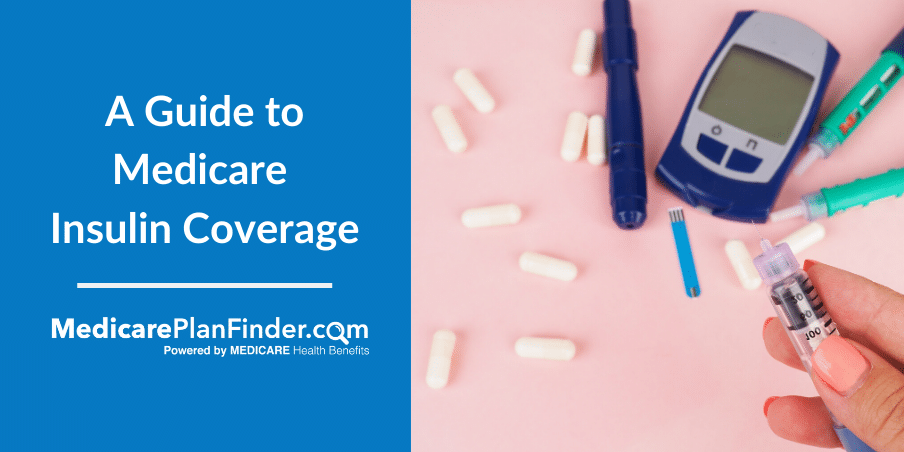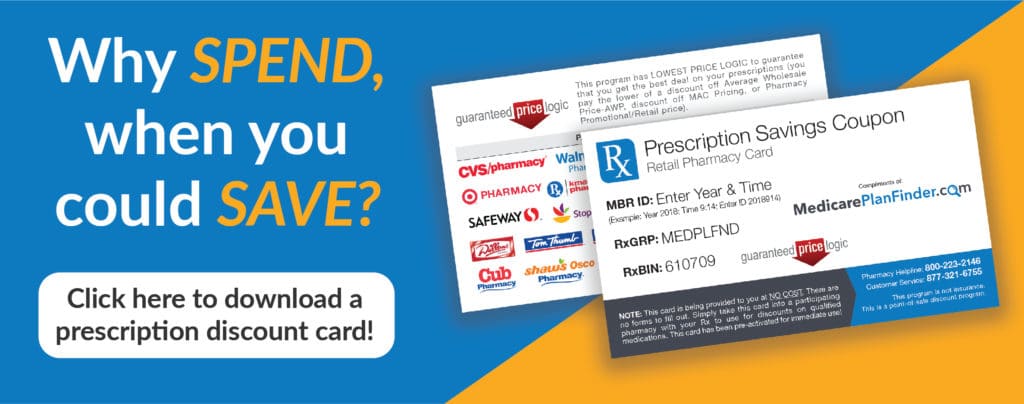
A Guide to Medicare Insulin Coverage
October 29, 2019According to the Kaiser Family Foundation (KFF), a non profit healthcare organization, Medicare Part D (prescription drug) spending increased from $1.4 billion to $13.3 billion from 2007 to 2017.
The huge increase in drug costs ultimately gets passed to the consumer. KFF also said that insulin out-of-pocket costs have “quadrupled.” That may be the case, but Medicare insulin coverage may help lower costs if you qualify.
How Does Medicare Insulin Coverage Work?
Original Medicare is the public health insurance that helps beneficiaries pay for medical expenses. It does not cover prescription drugs, with one exception — insulin.
However, Medicare insulin coverage is limited. Medicare Part B (medical insurance) only covers insulin if it’s administered with an insulin pump. The pump is considered to be durable medical equipment (DME), which Medicare helps cover when medically necessary.
That means that while Original Medicare may help pay for insulin pumps, diabetes screening/treatment, and even orthotics for diabetics, Original Medicare does not cover insulin by itself.
If you’re eligible for Medicare and want insulin coverage, you have two options. One option is through a Medicare Part D plan that only helps cover drugs. The other option is through a private insurance plan called a Medicare Advantage Prescription Drug (MAPD) plan.
Many Part D and MAPD plans use a formulary to determine how much you pay at the pharmacy. A formulary is a list of the drugs your plan covers. The list divides prescriptions into tiers. Each tier has a different copay or coinsurance amount. According to GoodRx, Lantus, the most popular insulin has “a copay of $37.50-$67.50.” That’s a significant savings when you consider that the estimated Walmart pharmacy retail price is $507.

How Can I Get Insulin at a Lower Price?
If you have a limited income, you may be able to receive help for Part D premiums and drug costs with a Low Income Subsidy (LIS), also called Extra Help. LIS eligibility is based on your income, assets, and the Federal Poverty Level. According to the Social Security Administration (SSA), Extra Help can save you almost $5 thousand per year. If you’re eligible for LIS, you won’t pay more than $8.50 for covered name brand drugs or $3.40 for covered generic prescription drugs.
If you qualify for LIS, you may also qualify for Medicaid. If you qualify for both Medicare and Medicaid, you may qualify for a Medicare Advantage plan called a Dual Special Needs Plan (DSNP). Many DSNPs offer prescription drug coverage with low copays. DSNPs may also offer additional benefits such as fitness classes, vision coverage, and meal delivery.
If you have LIS or a DSNP, you are eligible for a Special Enrollment Period (SEP), which allows you to enroll in new coverage or change existing plans at different parts of the year.
Many people have to wait until the Annual Enrollment Period (AEP), which is from October 15 to December 7 to make changes. With a LIS or DSNP SEP, you can make one change per quarter from January to September. Those changes will take effect on the first of the month following your change. You can make changes during AEP as well, however, those changes won’t take effect until January 1 the following year.
SEPs can be long-term or temporary. For example, in the case of a DSNP, you have a SEP for as long as you qualify for both Medicare and Medicaid. If you gain or lose Medicaid coverage, you have a temporary SEP, which allows you 30 days to enroll in a new plan.
To illustrate how a DSNP SEP works, let’s take the hypothetical example of a 70-year-old man who’s recently qualified for Medicaid. In this example, it’s January 12 and the man qualified on the 10th. The man has until February 9 to enroll in a DSNP. Let’s say he enrolls on February 9. The new coverage will take effect on March 1.
If the man decides he’s not satisfied with his new plan, he can make one change on April 1, which is the start of the second quarter of the year. The man won’t be allowed to make any more changes until July 1. He won’t be allowed to make any changes after September 30 with his DSNP SEP.
Why Is Insulin So Expensive?
According to NPR, many different factors affect insulin’s price. The most important factor is that there’s no generic equivalent to insulin.
With many drugs, other manufacturers cannot legally create generic versions because of patent laws
Once a patent expires, manufacturers have license to create generic versions of brand-name drugs. Generic drugs are often much cheaper than their name brand counterparts. According to the World Health Organization, current insulin patents won’t expire until 2030.
What Is Insulin?
Insulin is a hormone produced in the pancreas that regulates blood sugar. Your body will store glucose in your liver if there’s more sugar than it needs. Insulin will trigger your body to release that sugar when you need it.
If your blood sugar is too high, you can develop diabetes, which is when your body can’t use insulin efficiently or make its own insulin. Type 1 diabetes is when the pancreas can’t make insulin. Type 2 diabetes is when the pancreas makes insulin, but the body doesn’t respond well to it.
The drug insulin dates back to the early 1920s. Researchers conducted a clinical trial with diabetes patients. The trial used insulin from cattle pancreases, and “most patients recovered.” After the trial, insulin was “produced and sold on a massive scale around the world.” Both type 1 and type 2 diabetes need insulin shots to use glucose from food.
Types of Insulin
According to the American Diabetes Association, there are different types of insulin. The type of insulin your doctor prescribes depends on how quickly it works and how long it lasts. Insulin may have a peak blood-sugar lowering capacity and length of total time it works. Injectable insulin is the most common, and it can be divided into five types:
- Rapid-acting insulin: Starts to work about 15 minutes after injection, peaks in about one hour, and continues to work for two to four hours.
- Regular or short-acting insulin: Typically reaches the bloodstream within half an hour of injection, peaks anywhere from two to three hours after injection, and is effective for approximately three to six hours.
- Intermediate-acting insulin: Usually reaches the bloodstream about two to four hours after injection, peaks four to 12 hours later, and is effective for about 12 to 18 hours.
- Long-acting insulin: Reaches the bloodstream several hours after injection and can lower glucose levels for 24 hours or longer.
- Ultra long-acting insulin: Reaches the bloodstream in six hours, does not peak, and lasts about 36 hours.
Another way to take insulin is inhaled insulin. According to the American Diabetes Association, it begins working in 12-15 minutes, peaks by about 30 minutes, and leaves the body in about three hours.
No matter what type of insulin your doctor prescribes, be sure to follow the instructions for taking and storing the insulin. For example, all insulin comes in liquid form. You may have to refrigerate insulin so it doesn’t expire too soon.
Get Medicare Coverage for Insulin
If you need insulin coverage, a licensed agent with Medicare Plan Finder may be able to help. Our agents are highly trained. They can find what Part D and/or Medicare Advantage plans are in your area, and they can even help you apply for LIS. To set up a no-cost, no-obligation appointment call 844-431-1832 or contact us here today.

